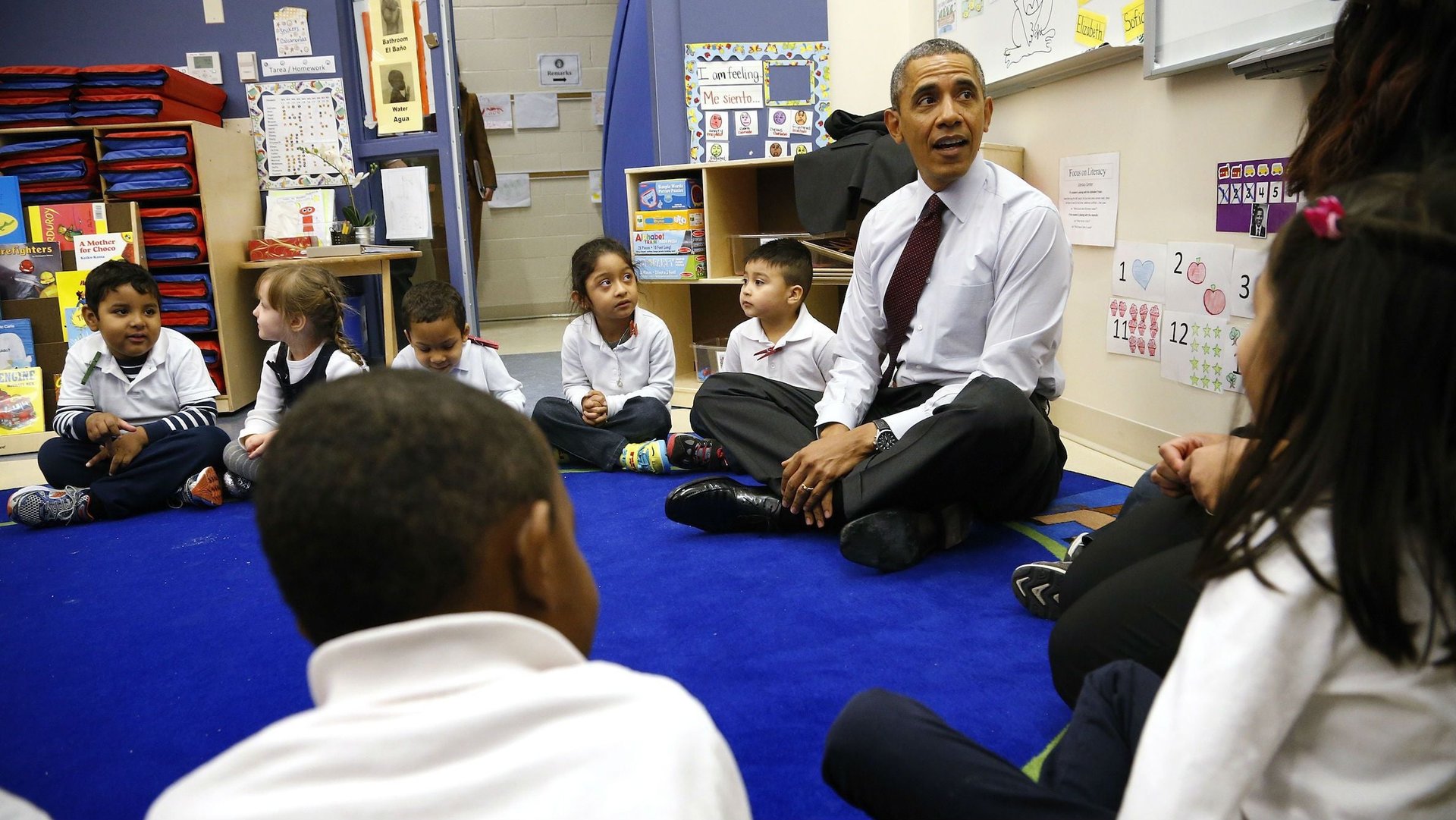Obama is right—childcare in America is insanely expensive
US president Barack Obama devoted a portion of his State of the Union address to the sky-high cost of childcare in America and its impact on working families. Referring to the children of one financially strapped couple in Minnesota, Obama said, “Basic childcare for Jack and Henry costs more than their mortgage, and almost as much as a year at the University of Minnesota.”


US president Barack Obama devoted a portion of his State of the Union address to the sky-high cost of childcare in America and its impact on working families. Referring to the children of one financially strapped couple in Minnesota, Obama said, “Basic childcare for Jack and Henry costs more than their mortgage, and almost as much as a year at the University of Minnesota.”
It’s not a rare circumstance. In 30 US states, plus the District of Columbia, average annual daycare costs exceed in-state tuition at a four-year college, according to a report last year by ChildCare Aware. (In Minnesota, the average annual cost of infant daycare is $14,300, which is more than what it costs even out-of-state students to attend the University of Minnesota for a year.)
Almost everywhere in the US, families spend twice as much on childcare as they do on food, the report found.
As we’ve pointed out before, the lack of affordable child care may be the real reason why the glass ceiling still exists. And the ChildCare Aware report concluded that employee absenteeism caused by lack of childcare ends up costing US businesses as much as $3 billion a year.
It doesn’t have to be this way. And 70-plus years ago, it wasn’t. Tamara Straus, editorial director of the Blum Center for Developing Economies at UC Berkeley, recently laid out the case for the US to revive the concept of universal childcare. Writing in the Cal Alumni Association’s California magazine, she noted that in 1943, the US adopted a comprehensive childcare program that allowed women to enter the workforce en masse during World War II. Obama referenced the same era in his speech tonight:
“During World War II, when men like my grandfather went off to war, having women like my grandmother in the workforce was a national security priority — so this country provided universal childcare. In today’s economy, when having both parents in the workforce is an economic necessity for many families, we need affordable, high-quality childcare more than ever. It’s not a nice-to-have — it’s a must-have. It’s time we stop treating childcare as a side issue, or a women’s issue, and treat it like the national economic priority that it is for all of us.”
The president didn’t propose a similar program but instead called for annual tax cuts of up to $3,000 per child and more childcare help for middle-class and low-income families.